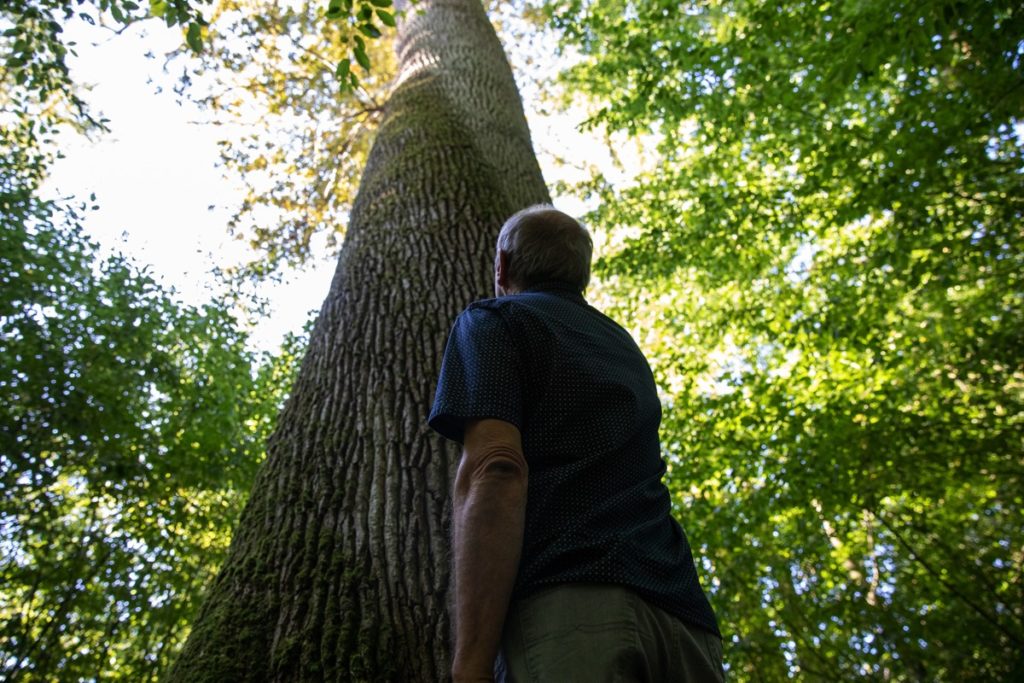Not everyone knows just how long it takes for an oak tree to complete its life cycle in a forest in the Bourgogne.
That is, starting from seedlings that then shoot upwards, healthy and strong, and mature so that its wood can be made available to man, but only after it has spread its own acorns and given life to innumerable other trees. On average it takes 180 years, according to the regulations drafted for the management of sustainable wood forests.
This means that more than five working generations must watch the forest grow to ensure its future.
And it is our task to be equally generous and ensure that new trees have the chance to grow for the benefit of future generations. Serit arbores, quae alteri saeculo prosint – “plant trees as they will serve in centuries to come” – Cato the Elder (or Censor) once said. Is that not perhaps one of the greatest expressions of long term planning ever?

And it perfectly expresses Listone Giordano’s own vision, its mission. But the company is not just repeating simple words, it has, for more than a century, had a direct commitment to responsible management of forests.
“We are sometimes led to believe that the earth belongs to us as an inheritance left by our parents. The fact is, it has been left in our care for our children.”
This ages old Indian saying is an invitation to reflect on the consequences of the choices we make.
Even the things we decide to buy affect what the future will be like. Learning more about every aspect and being responsible for one’s own choices means encouraging good practices. And by doing that, we contribute to providing a better world for our children to live in.
It was in France’s Bourgogne region that Listone Giordano learned the secrets of an ages-old method of forestry.
France is universally known as a model of eco-sustainable forest management. For centuries it has preserved and nurtured a massive heritage of forests and woodlands. Some 18 million hectares, in fact, more than a third of its territory.
And each tree is counted, cultivated and cut when mature, after which replanting begins and the cycle starts all over again. All in keeping with ancient traditions.
The history of forest management in France goes back deep in time. The first documentation of it dates to the Middle Ages, when monastic orders jealously guarded this precious resource. Like a forest called Cîteaux, in the Bourgogne, a refuge chosen by Cistercian monks in about the year 1000, and then protected and cultivated by them over time.
The same rules they applied to tending to their woods still today safeguard the health of the old French forest, making sure it is properly used and ensuring its progressive growth. One fact often explains more than a thousand words.
By properly handing the forest down over generations, always looking towards the future and closely following the strict rules of sustainable management, over the past hundred years this French forest has doubled in size and tripled the amount of wood it yields.
The French school of forestry was “transplanted” in Umbria, in the green heart of Italy, the birthplace of St. Benedict, St. Claire and St. Francis. Listone Giordano embarked, in 1999, upon one of the most important reforestation projects of hardwoods Italy has ever seen, planting some 22,000 new oak trees.
The project covers an area of more than 150 hectares and is the first time an Italian initiative of this genre has obtained international standards certification in keeping with both the PEFC and FSC®. It attests to a forest management style that meets the most advanced criteria for environmental, economic and social sustainability.
The forest in Città della Pieve is based on a maturation cycle of 150 years and represents a tangible reality in which the environment is ensured a future which only long-term planning that respects biological rhythm and nature’s own clock can ensure.
The experience gained at the Città della Pieve reserve is a model for all Italian forestry. An extraordinary open air lab available to research institutes to hone their forest management skills and tools and implement international level eco-certification projects. But above all, available to schools so that they can educate future generations about what it means to respect the environment, and what long term planning is all about.
Listone Giordano’ production takes place in the heart of Umbria at a plant nestled in a unique landscape. A production facility designed to blend seamlessly into the surrounding countryside.
Respect for the air, for the soil, the water and landscape, these are all characteristics which, from the very beginning, have influenced the project, with special attention to energy saving and the recovery and recycling of production residue.
This is why the Listone Giordano production plant was among the very first to receive ISO 14001 certification, the international recognition that certifies a company’s commitment to reduce pollution and environmental impact of industrial plants to a minimum.
It is a model project that was presented at the XIII International Architecture Biennale in Venice as an example of an industrial enterprise that truly adheres to the values of Made in Italy.